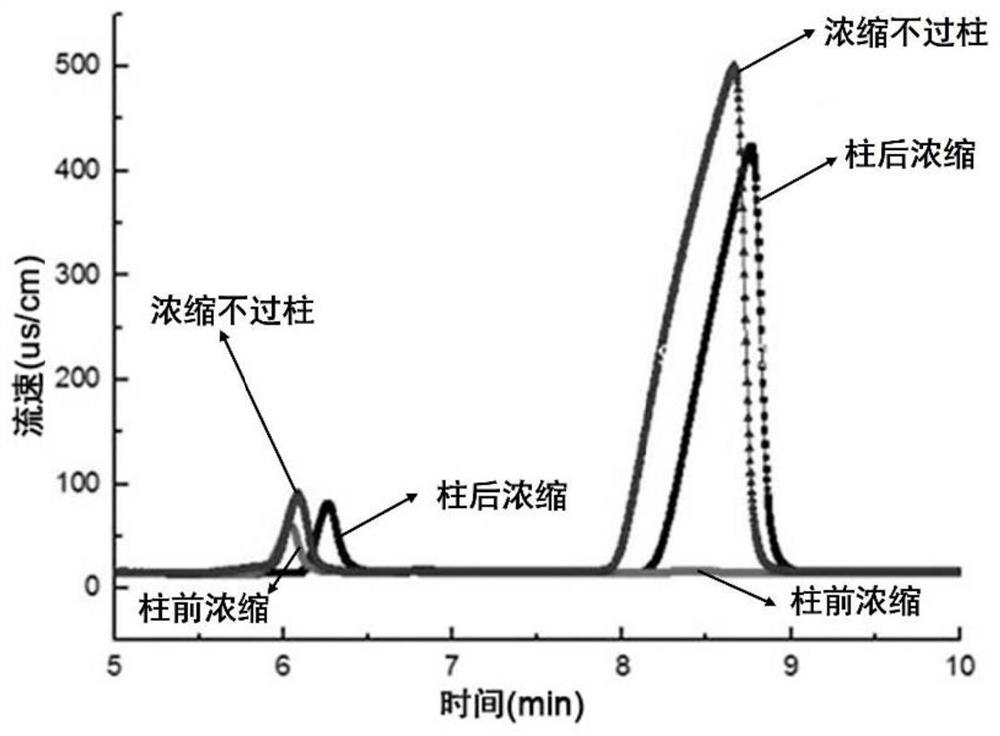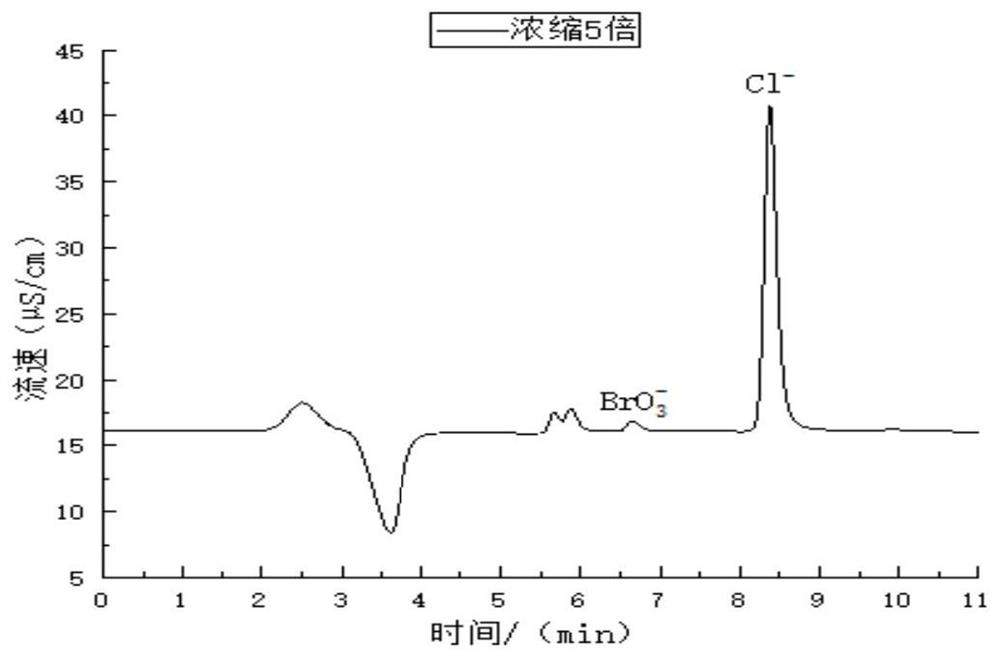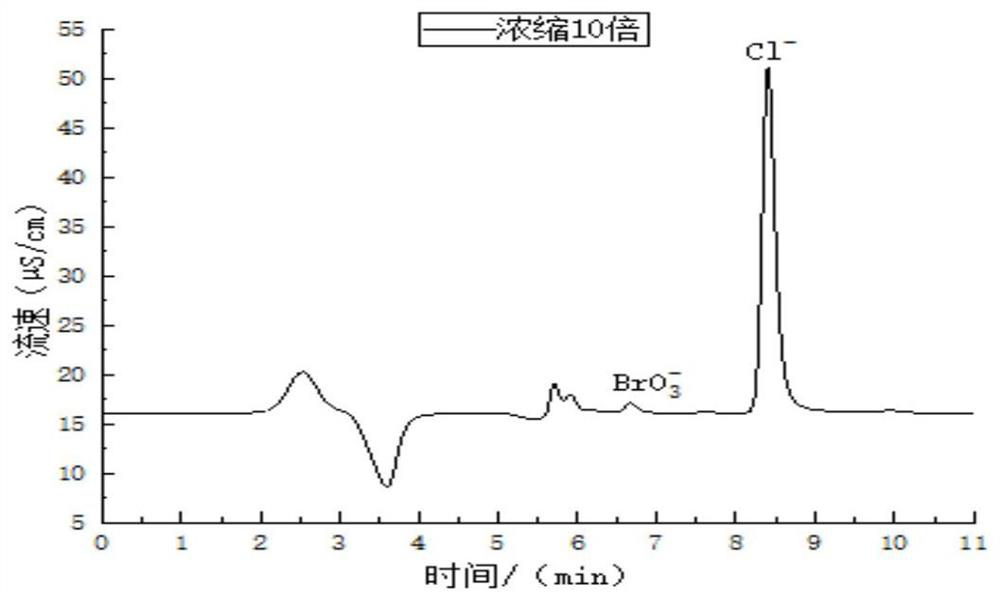Method for measuring bromate content in drinking water
A technology of bromate and drinking water, which is applied in the direction of measuring devices, instruments, scientific instruments, etc., can solve the problems of low detection limit and low accuracy of detection results, improve sensitivity and accuracy, and solve the problem of inaccurate detection results high effect
- Summary
- Abstract
- Description
- Claims
- Application Information
AI Technical Summary
Problems solved by technology
Method used
Image
Examples
Embodiment 1
[0031] Example 1: Influence of different ways of removing chloride ions on the effect of removing chloride ions in water samples
[0032] In this embodiment, the method of concentrating the water sample is the direct heating method, and the specific operation is as follows: take the water sample in a clean beaker, and place the beaker directly on the electric furnace to concentrate the water sample.
[0033] In order to select a suitable way of removing chloride ions, in this embodiment, the water samples that pass through the silver solid-phase extraction column and then are concentrated and enriched for bromate ions, the water samples that are first concentrated and enriched with bromate ions and then passed through the silver solid-phase extraction column, and The water samples that cannot be concentrated on the silver solid-phase extraction column are analyzed by ion chromatography. The water samples that cannot be concentrated on the silver solid-phase extraction column ar...
Embodiment 2
[0034] Example 2: Influence of different concentration multiples on the recovery rate of water samples
[0035] According to the experimental results in Example 1, the pretreatment of the water sample in this example adopts the method of first concentrating the water sample and then passing through a silver solid-phase extraction column to remove chloride ions in the water sample. On the basis of directly heating the concentrated water sample, this example determines the appropriate concentration ratio by studying the relationship between the multiple of the concentrated water sample and the recovery rate of bromate of the measured substance.
[0036] The specific operation of this example is as follows: take 12 clean beakers and divide them into two groups, 6 in each group, add 50 mL of water samples to each group, and add 2.5 mL of BrO to 3 of the water samples. 3 - Standard solution (100 μg / L), the remaining 3 water samples were used as blank samples, this group of water s...
Embodiment 3
[0039] Example 3: Calculation of method detection limit and quantification limit and its accuracy evaluation
[0040] Based on the experimental results of Example 2, this example adopts the following pretreatment method for the water sample with low bromate content: first, it is directly heated and concentrated for 5 times and then passed through a silver solid phase extraction column to remove chloride ions in the water sample.
[0041] The pretreated water samples with low bromate content were injected into the ion exchange chromatograph for analysis, and the experiment was repeated 7 times in parallel. The test results are shown in Table 2. Calculate the standard deviation S based on the actual concentration of bromate in the water sample, and the standard deviation S can be obtained as 0.080. The detection limit MDL is calculated according to the following formula (1),
[0042] MDL=t(6,0.99)·S (1)
[0043] Among them, the value of t in the formula is 3.143, which is a on...
PUM
 Login to View More
Login to View More Abstract
Description
Claims
Application Information
 Login to View More
Login to View More - Generate Ideas
- Intellectual Property
- Life Sciences
- Materials
- Tech Scout
- Unparalleled Data Quality
- Higher Quality Content
- 60% Fewer Hallucinations
Browse by: Latest US Patents, China's latest patents, Technical Efficacy Thesaurus, Application Domain, Technology Topic, Popular Technical Reports.
© 2025 PatSnap. All rights reserved.Legal|Privacy policy|Modern Slavery Act Transparency Statement|Sitemap|About US| Contact US: help@patsnap.com



